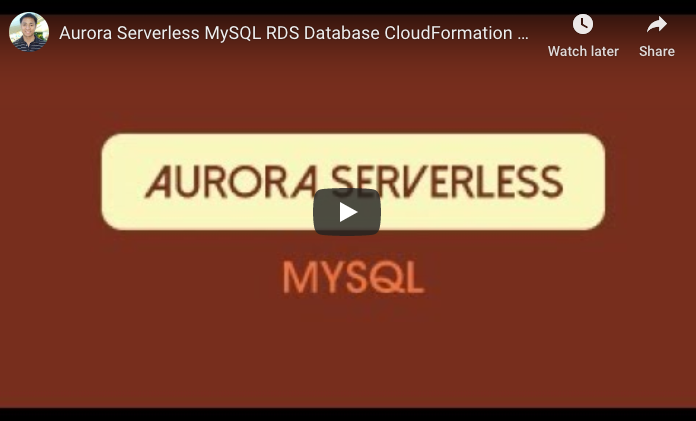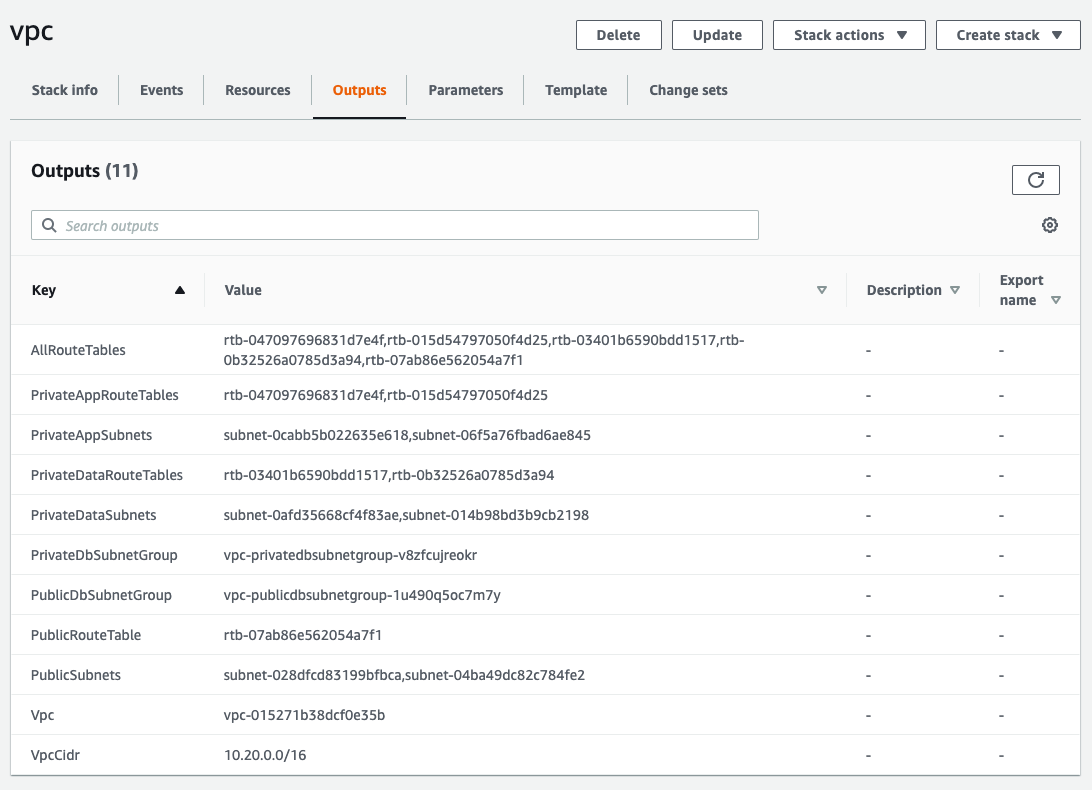NOTE: This repo contains only the documentation for the private BoltsOps Pro repo code. Original file: https://github.com/boltopspro/aurora-serverless/blob/master/README.md The docs are publish so they are available for interested customers. For access to the source code, you must be a paying BoltOps Pro subscriber. If are interested, you can contact us at contact@boltops.com or https://www.boltops.com
This blueprint provisions a RDS Aurora Serverless Database Cluster.
- AutoScaling settings are configured with Parameters.
- Storage is encrypted by default.
- A managed DB Subnet Group can be created by configuring
SubnetIds. Or you can use an existingDBSubnetGroupName. - Can create an optional managed Route53 records that point to the cluster endpoint.
- Cluster Parameters can be configured with code.
- For a standard RDS Database, refer to the RDS Blueprint. You might also be interested in the aurora blueprint.
- Add blueprint to Gemfile
- Configure: configs/aurora-serverless values
- Deploy blueprint
Add the blueprint to your lono project's Gemfile.
gem "aurora-serverless", git: "git@github.com:boltopspro/aurora-serverless.git"Use the lono seed command to generate a starter config params files.
LONO_ENV=development lono seed aurora-serverless
LONO_ENV=production lono seed aurora-serverless
The files in config/aurora-serverless folder will look something like this:
configs/aurora-serverless/
├── params
│ ├── development.txt
│ └── production.txt
└── variables
├── development.rb
└── production.rb
Configure the configs/aurora-serverless/params and configs/aurora-serverless/variables files. The parameters required: MasterUsername, MasterUserPassword, and VpcId. Example:
configs/aurora-serverless/params/development.txt:
MasterUsername=myuser
MasterUserPassword=mypassword
VpcId=vpc-111
Use the lono cfn deploy command to deploy.
LONO_ENV=development lono cfn deploy aurora-serverless --sure --no-wait
LONO_ENV=production lono cfn deploy aurora-serverless --sure --no-wait
It takes about 15m to deploy the aurora-serverless DB instance. Times may vary.
If you are using One AWS Account, use these commands instead: One Account.
The Engine, EngineVersion, ClusterParameterGroupFamily, DBInstanceClass parameters must be a valid combination.
A managed DB Parameter Group is also created based on the ClusterParameterGroupFamily parameter and @cluster_parameter_group_parameters variable. @cluster_parameter_group_parameters must contain at least 1 parameter value. Here's a table with tested example values:
| Engine | EngineVersion | ClusterParameterGroupFamily | DBInstanceClass | parameter example |
|---|---|---|---|---|
| aurora | 5.6.10a | aurora5.6 | db.t3.small | time_zone=US/Pacific |
Each particular database engine is different and has its own configuration values. Refer to each databases's docs to find out what you can set. Here are some useful docs:
- Database Engine Versions for Amazon Aurora PostgreSQL
- How do I change the time zone of my Amazon RDS DB instance?
- Choosing the DB Instance Class
You can also configure the ScalingConfiguration with parameters. Example:
configs/aurora-serverless/params/development.txt:
AutoPause=true
MaxCapacity=16
MinCapacity=2
SecondsUntilAutoPause=300
You must also provide either DBSubnetGroupName or SubnetIds. Only provide only one, not both.
By Providing the SubnetIds parameter only the blueprint will create a managed AWS::RDS::DBSubnetGroup resource in the same custom VPC. Example:
VpcId=vpc-111
SubnetIds=subnet-111,subnet-222
It is recommended to run the database in a private data subnet. The reference-architecture vpc blueprint is has a PrivateDBSubnetGroup db subnet group contains the private subnets. A quick way to get the VPC and subnet values is from the VPC CloudFormation Outputs. Here's an example of the development VPC.
If you are not using the reference architecture and you do not have a Db Subnet Group, specifying SubnetIds will create a AWS::RDS::DBSubnetGroup
for you.
To assign existing security groups to the RDS database use VpcSecurityGroupIds. Example:
VpcSecurityGroupIds=sg-111,sg-222
If not set, then the blueprint will create and a managed Security Group and assign it to the RDS database.
It is recommended to use a Private HostedZone to create a pretty endpoint for the DBCluster Endpoint. Example:
DnsName=dbcluster.private.
HostedZoneName=private.
Several AWS::RDS::DBCluster properties are configurable with Parameters. Properties that are not configurable with Parameters are configured with Variables. The @cluster_properties variable allows you to override any property. Example:
@cluster_properties = {
port: 3306,
character_set_name: "utf8_unicode_ci",
}The blueprint is written so that Variables take higher precedence than Parameters.
Using CloudFormation to provision RDS databases has some pros and cons.
- The main pro is that the infrastructure is codified and reproducible.
- The main con is that CloudFormation can replace your database entirely, and you'll lose your data!
Depending on the AWS::RDS::Instance property property that is changed, CloudFormation replaces the database entirely. You have to look for "Update requires: Replacement". This is dangerously easy to forget.
An excellent way to provide a guard rail against accidental replacement is to set the DBClusterIdentifier parameter. If you change any property that requires replacement, then the CloudFormation stack update will immediately fail, because RDS won't be able to create another database with the same DBClusterIdentifier.
Another technique you can use to prevent an accidental replacement is only to use CloudFormation for the initial provisioning of the database. Afterward, you'll modify the RDS DB with the API or Console only. Yet another way to provide a guard rail is to enable DeletionProtection=true. This prevents the current database from being deleted. However, it deletion happens as part of the CloudFormation cleanup step, so it takes longer for the rollback to finish.



